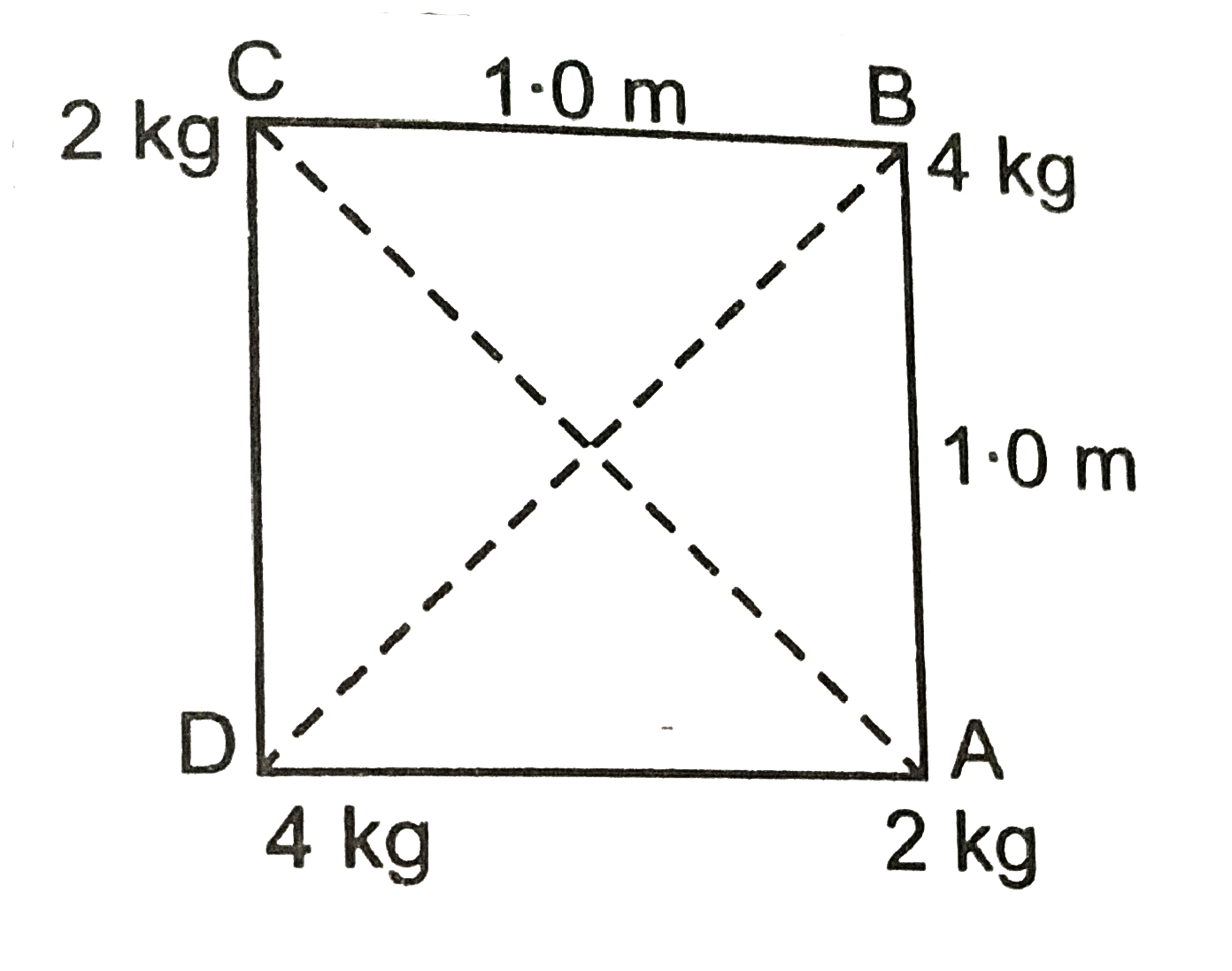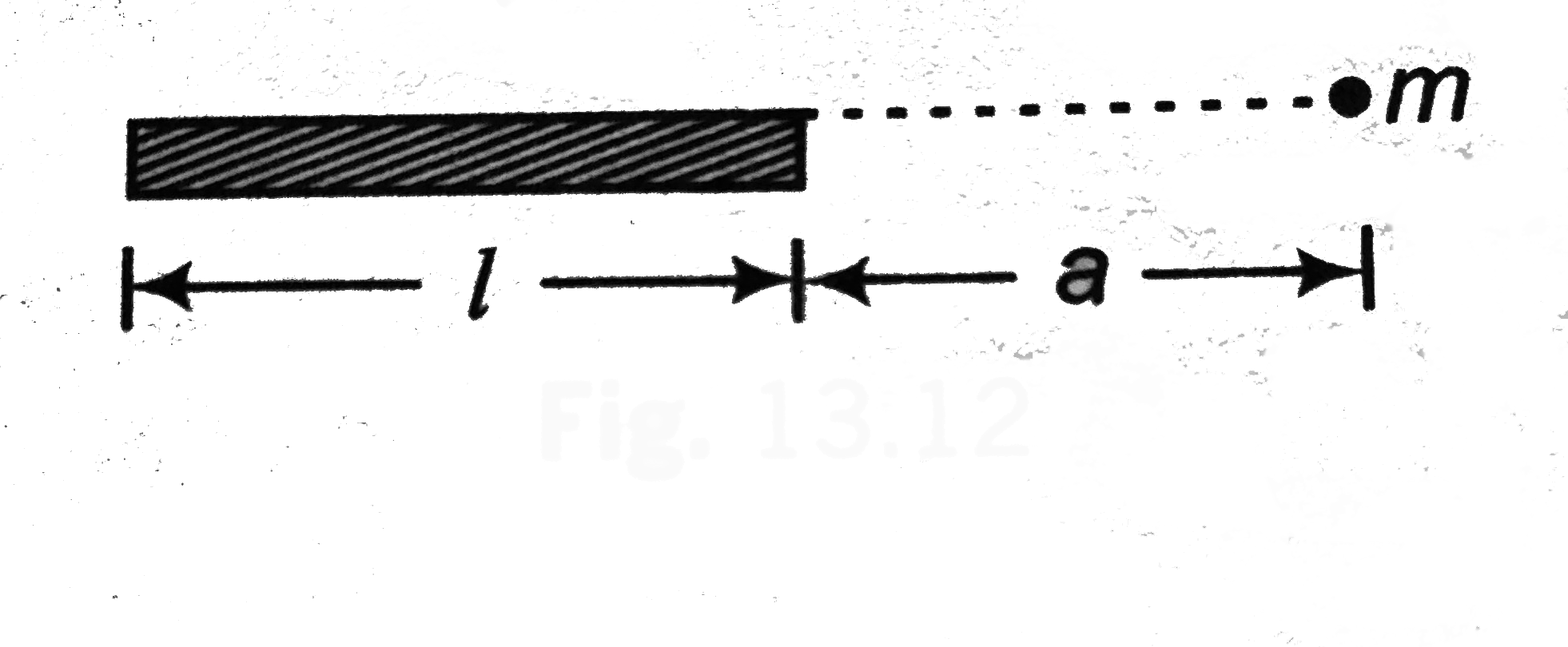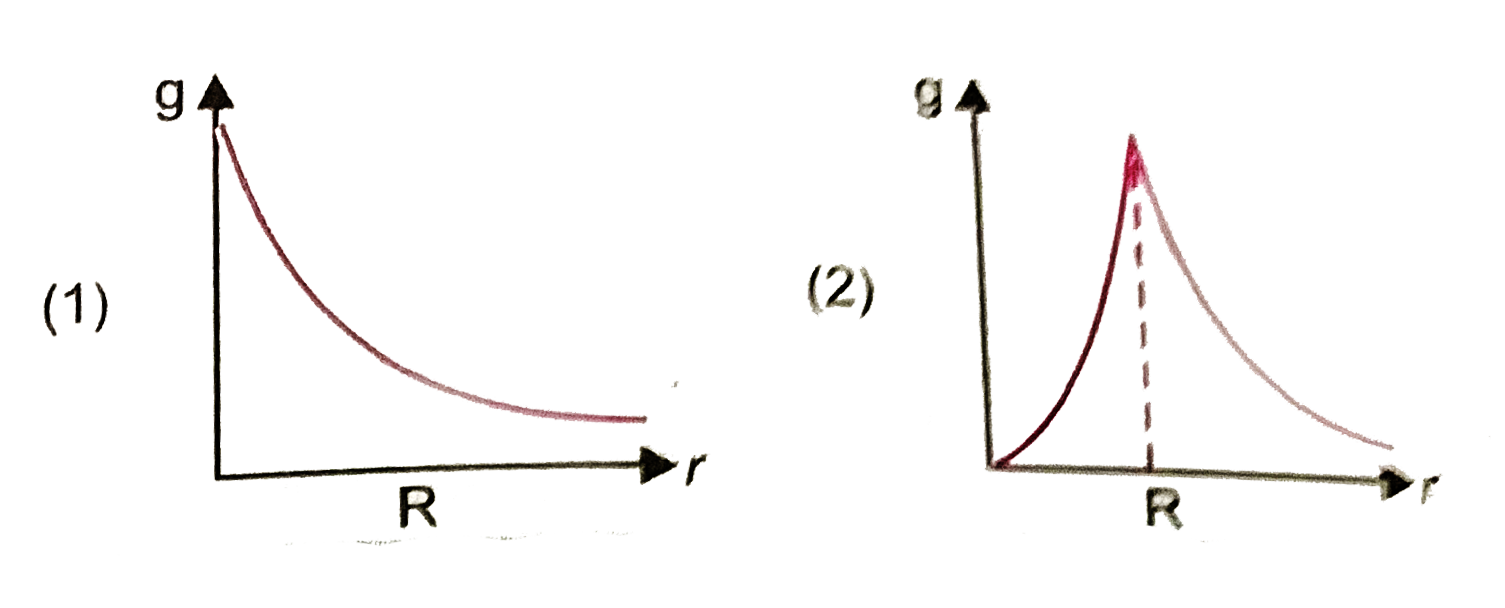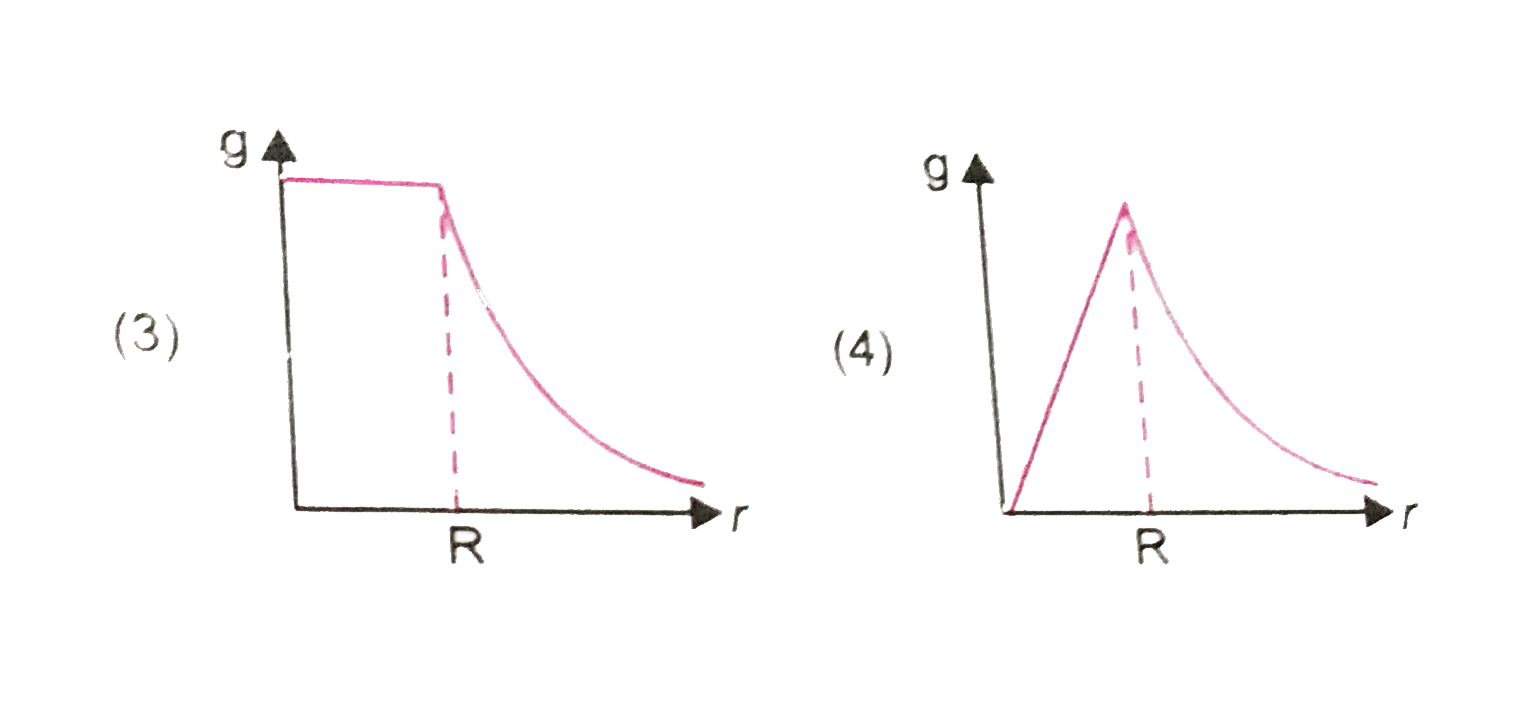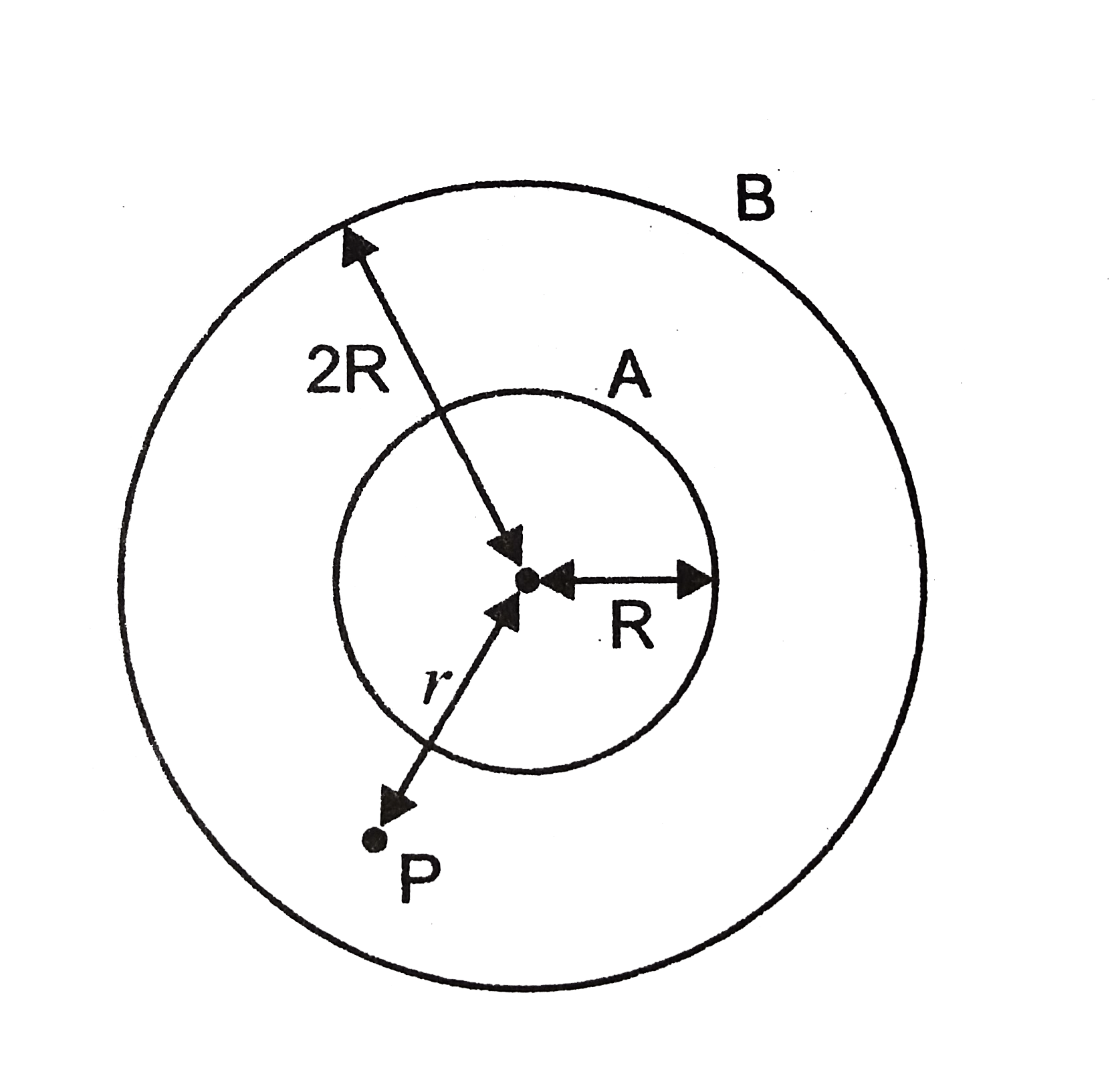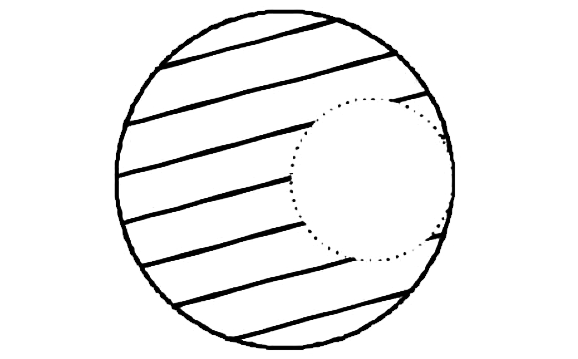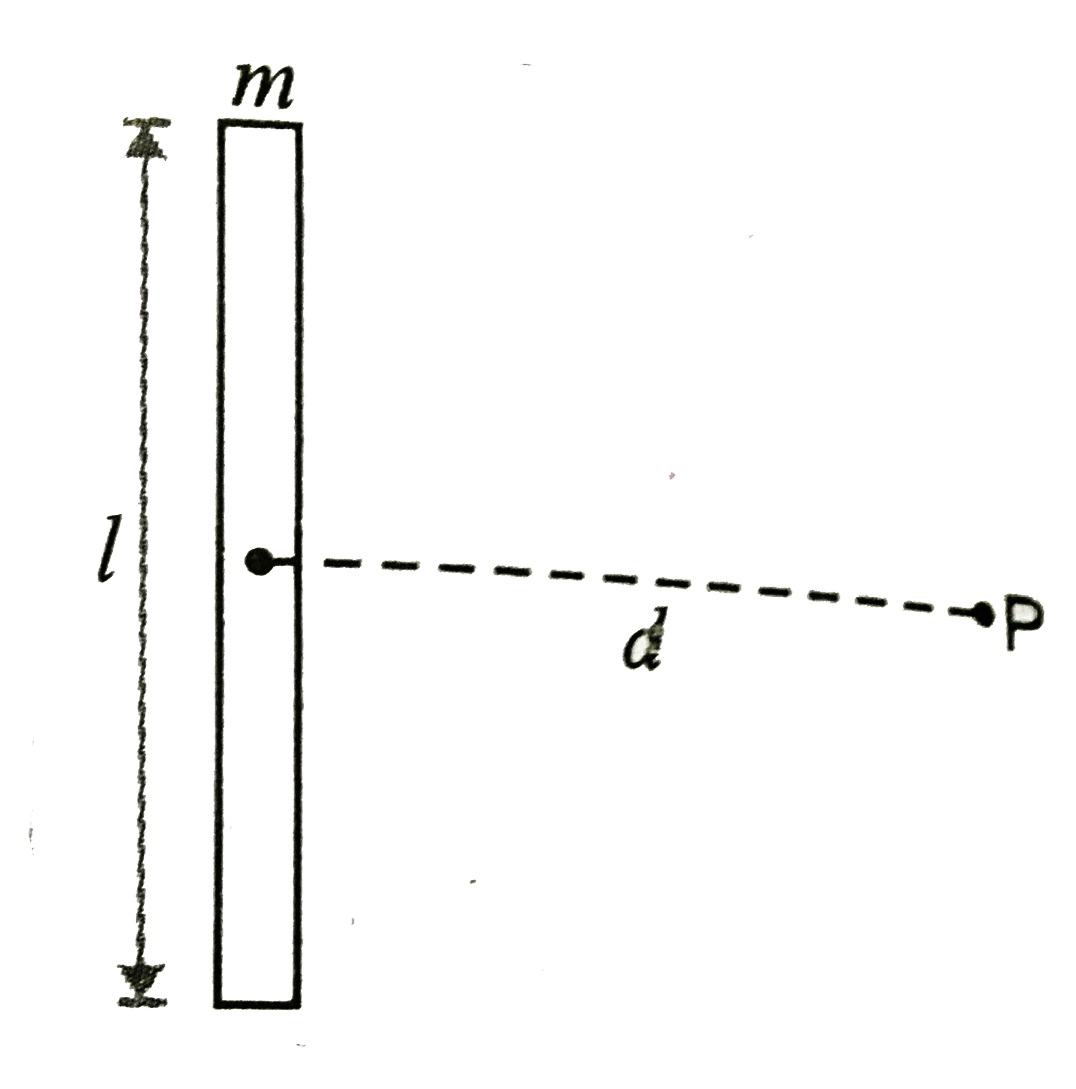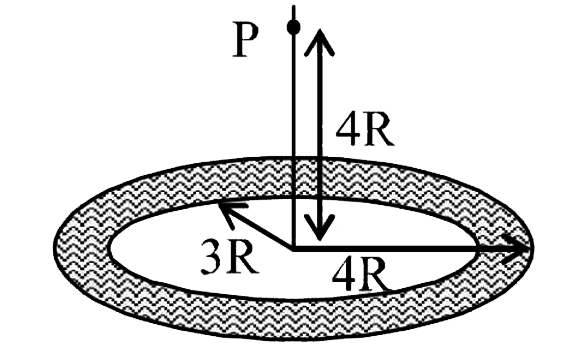PROBLEMS FOR PRACTIVE C from PRADEEP PHYSICS (HINGLISH) GRAVIATION for Class 11
| Class 11 | PHYSICS |
| Chapter | GRAVIATION |
| PRADEEP PHYSICS (HINGLISH) | PROBLEMS FOR PRACTIVE C |
| Medium | English |
| Academic Year | 2023-2024 |
Question 3
Read the following statements :
S1 : An object shall weigh more at pole than at equator when weighed by using a physical balance.
S2 : It shall weigh the same at pole and equator when weighed by using a physical balance.
S3 : It shall weigh the same at pole and equator when weighed by using a spring balance.
S4 : It shall weigh more at the pole than at equator when weighed using a spring balance.
Which of the above statements is/are correct ?View SolutionQuestion 28
A rocket is fired the Earth towards the Moon. At what distance from the Moon is the gravitational force on the rocket is zero. Mass of Earth is 6×1024kg , mass of moon is 7.4×1022kg and distance between moon and earth is 3.8×108m. Neglect the effect of the sun and other planes.View SolutionQuestion 31
There is a point between the earth and the moon, where the gravitational force on a space ship due to earth and moon together is zero. Find the distance of that point from the earth Given the disatnce between earth and moon is 3.845x108m and the moon has 1.2% of the mass of the earth.View SolutionQuestion 37
The weight of a person on the Earth is 80kg. What will be his weight on the Moon ? Mass of the Moon =7.34×1022kg, radius =1.75×106m and gravitational constant =6.67×10−11Nm2kg−2. What will be the mass of the person at the Moon and acceleration due to gravity there ? If this person can jump 2m high on the Earth, how much high can he jump at the Moon ?View SolutionQuestion 41
The value of acceleration due to gravity at the surface of the earth is 9.8ms−2 and the mean radius is about 6.4×106m. Assuming that we could get more soil some where, estimate how thick would an added uniform outer layer on the earth have to have the value of acceleration due to gravity 10ms−2 exactly ?View SolutionQuestion 71
A body is projected vertically upwards from the surface of the Earth so as to reach a height equal to the radius of the Earth. Neglecting resistance due to it, calculate the initial speed which should be imparted to the body. Mass of Earth =5.98×1024kg, Radius of Earth =6400km, G=6.67×10−11Nm2kg−2.View SolutionQuestion 75
In a two stage launch of a satllite, the first stage bringe the satlilte to a height of 500km and the second stage given it the necessary critical speed to put it in circular orbit around the Earth. Which stage requires more expenditude of fuel?
(Neglect damping due to air resistance, especially in the first stage).
Mass of the Earth =6.0×1024kg,radius of Earth =6400km,G=6.67×10−11Nm2kg−2.View SolutionQuestion 79
In an imaginary planetary systam, the centrel star has the same mass as our sun, but is much brighter so that only a planet twice the distance between the Earth and sun can support life. According to bilogical evolution (including aging processes etc.) on that planet similar to ours, what would be the average life span of a 'human' on that planet in terms of its natural life ? The average life span of a human on the Earth may be taken to be 70 years.View SolutionQuestion 82
Different points in the earth are at slightly different distance from the sun and hence experience different force due to gravitation. For a rigid body, we know that if various forces act at various points in it, the resultant motion is as if a net force acts on the CM (centre of mass) causing translation and a net torque at the CM causing rotation around an axis through the CM. for the earth-sun system (approximating the earth as a uniform density sphere). View SolutionQuestion 107
A U-tube with both ends open to the atmosphere is partially filled with water. Oil, which is immiscible with water. Is poured into one side until it stands at a distance of 10mm above the water level on the other side. Meanwhile the water rises by 65mm from its original level (see diagram). The density of the oil is:
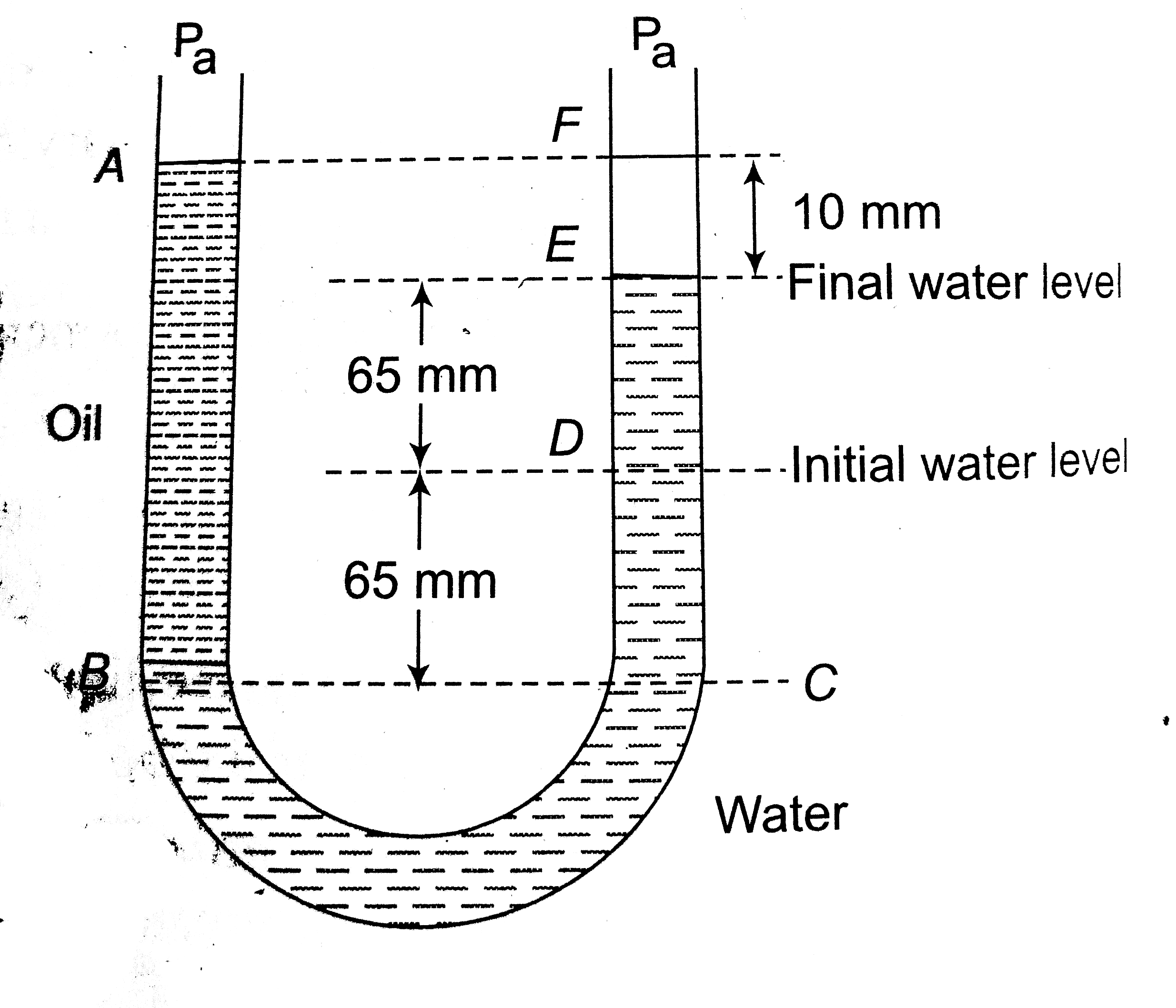 View Solution
View SolutionQuestion 108
A solid sphere of uniform density and radius R applies a gravitational force of attraction equal to F1 on a particle placed at P, distance 2R from the centre O of the sphere. A spherical cavity of radius R/2 is now made in the sphere as shown in figure. The particle with cavity now applies a gravitational force F2 on same particle placed at P. The radio F2/F1 will be
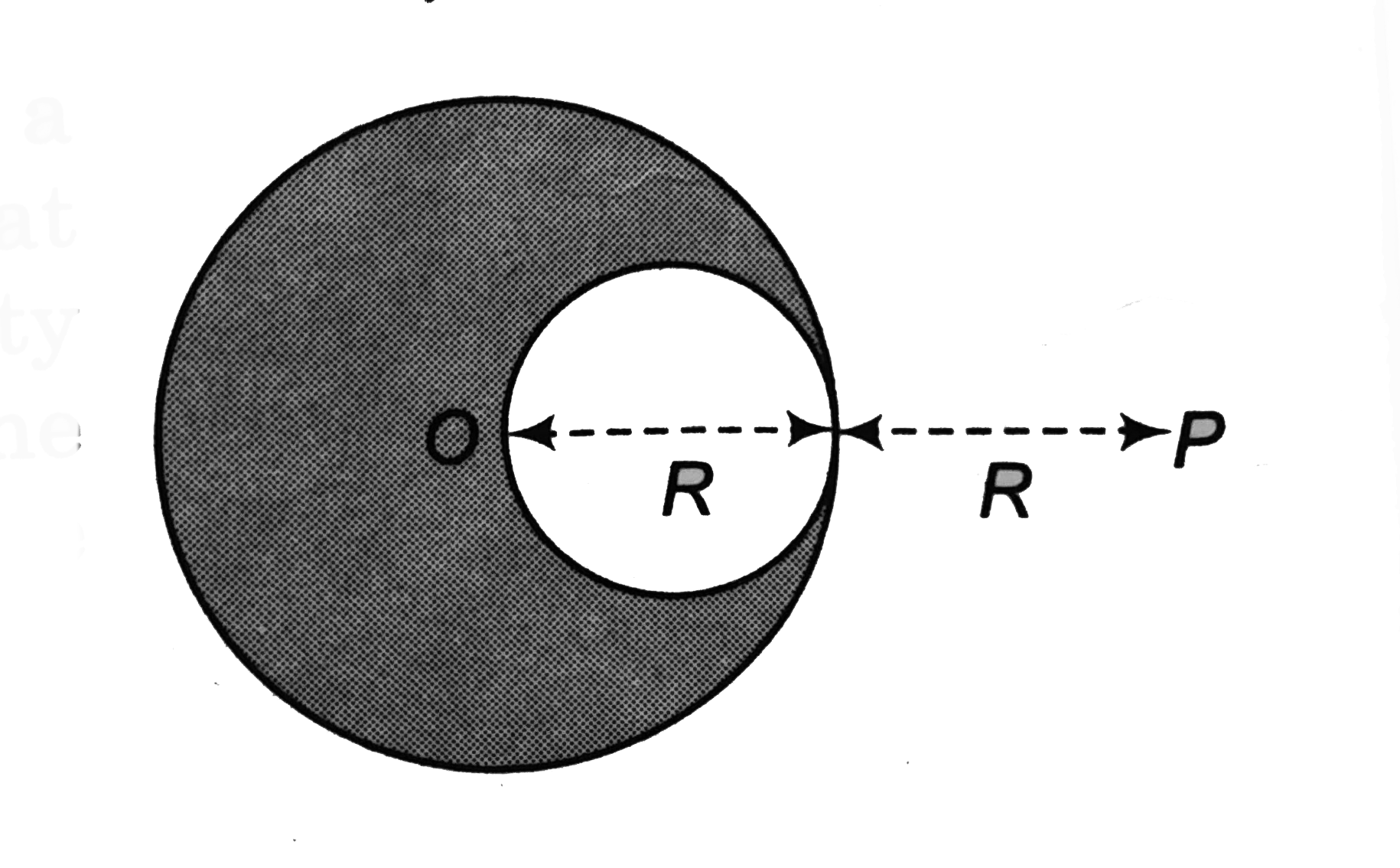 View Solution
View SolutionQuestion 109
A solid sphere of uniform density and radius R applies a gravitational force of attraction equal to F1 on a particle placed at P, distance 2R from the centre O of the sphere. A spherical cavity of radius R/2 is now made in the sphere as shown in figure. The particle with cavity now applies a gravitational force F2 on same particle placed at P. The radio F2/F1 will be
 View Solution
View SolutionQuestion 111
Suppose the acceleration due to gravity at earth's surface is 10ms−2 and at the surface of Mars it is 4.0ms−2. A passenger goes from the to the mars in a spaceship with a constant velocity. Neglect all other object in sky. Which part of figure best represent the weight (net gravitational force) of the passenger as a function of time?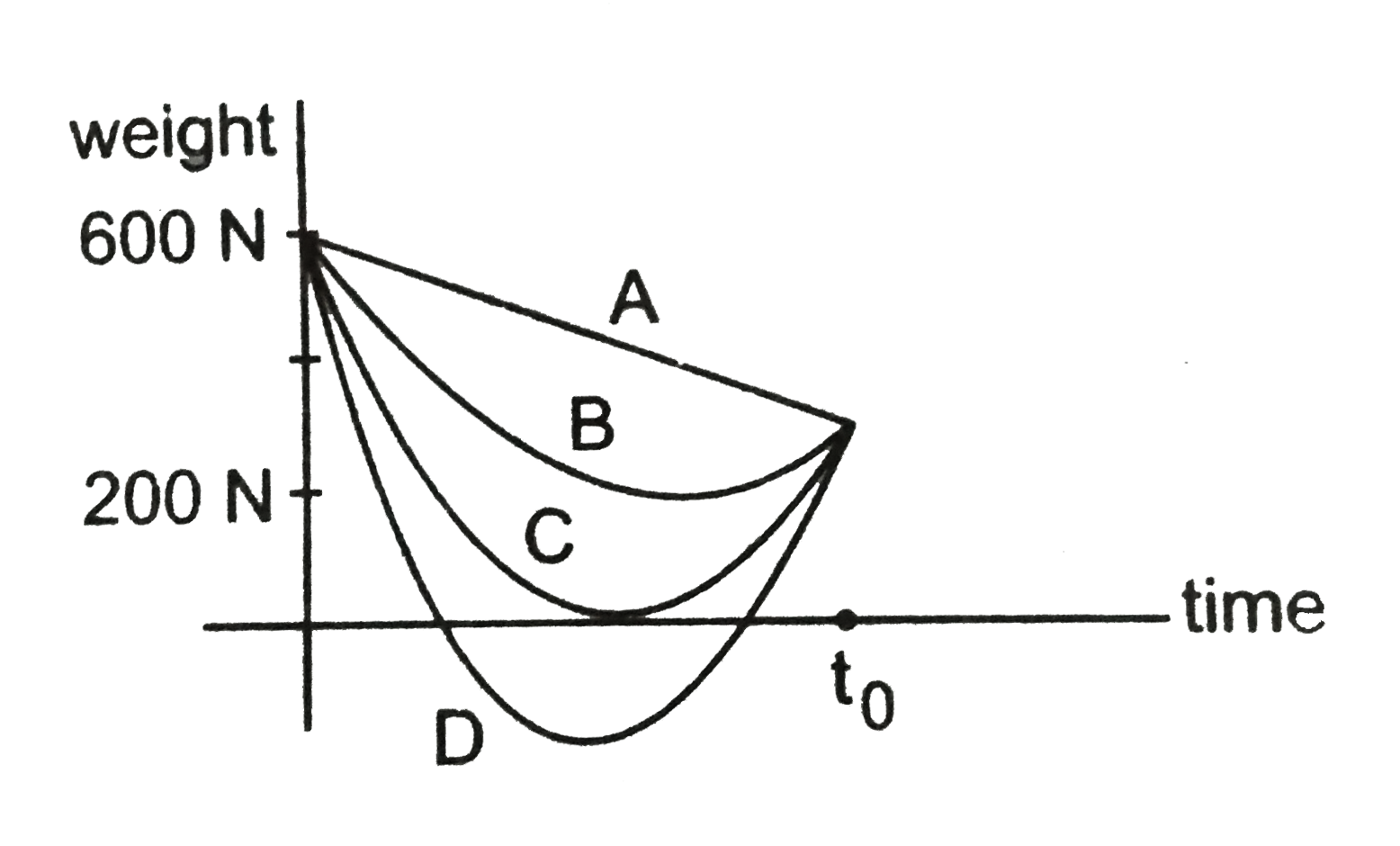 View Solution
View SolutionQuestion 113
A larger spherical mass M is fixed at one position and two identical point masses m are kept on a line passing through the centre of M. The point masses are connected by rigid massless rod of length l and this assembly is free to move along the line connecting them. All three masses interact only throght their mutual gravitational interaction. When the point mass nearer to M is at a distance r =3l form M, the tensin in the rod is zero for m=k(M288). The value of k is
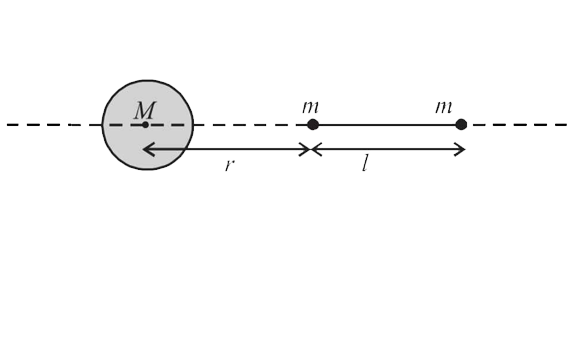 View Solution
View SolutionQuestion 115
Two spherical bodies of mass M and 5M & radii R & 2R respectively are released in free space with initial separation between their centres equal to 12R. If they attract each other due to gravitational force only, then the distance covered by the smallar body just before collision is View SolutionQuestion 121
A planet of radius R=110×(radiusofEarth) has the same mass density as Earth. Scientists dig a well of depthR5 on it and lower a wire of the same length and a linear mass density 10−3kgm(_1) into it. If the wire is not touching anywhere, the force applied at the top of the wire by a person holding it inplace is (take the radius of Earth=6×106m and the acceleration due to gravity on Earth is 10ms−2View SolutionQuestion 127
(1) Centre of gravity (C.G.) of a body is the point at which the weight of the body acts,
(2) Centre of mass coincides with the centre of gravity if the earth is assumed to have infinitely large radius,
(3) To evaluate the gravitational field intensity due to any body at an external point, the entire mass of the body can be cosidered to be concentrated at its C.G..,
(4) The radius of gyration of any body rotating about ab axis is the length of the perpendicular dropped from thr C.G. the body to the axis. which one of the following paires of statements is correct ?View SolutionQuestion 128
A spherically symmetric gravitational system of particles has a mass densityρ={ρ0forr<R0forr>R whereρ0 is a constant. A test mass can undergo circular motion under the influence of the gravitational field of particles. Its speed v as a function of distahce r(0<r<OO) form the centre of the system is represented byView SolutionQuestion 153
Kepler's third law states that square of period revolution (T) of a planet around the sun is proportional to third power of average distance i between sun and planet i.e. T2=Kr3
here K is constant
if the mass of sun and planet are M and m respectively then as per Newton's law of gravitational the force of alteaction between them is F=GMmr2, here G is gravitational constant. The relation between G and K is described as View SolutionQuestion 156
A rocket is launched normal to the surface of the earth, away from the sun, along the line joining the sun and the earth. The sun is 3×105 times heavier than the earth and is at a distance 2.5×104 times larger than the radius of the earth. the escape velocity from earth's gravitational field is ue=11.2ms−1. The minmum initial velocity (ue)=11.2ms−1. the minimum initial velocity (us) required for the rocket to be able to leave the sun-earth system is closest to (Ignore the rotation of the earth and the presence of any other planetView SolutionQuestion 167
A satellite is revolving in a circular orbit at a height 'h' from the earth's surface (radius of earth R, h ltltR). The minimum increase in its orbital velocity required, So that the satellite could escape from the erth's gravitational field, is close to :(Neglect the effect of atomsphere.)View SolutionQuestion 170
A bullet is fired vertically upwards with a velocity υ from the surface of a spherical planet when it reaches its maximum height, its acceleration due to the planet's gravity is 14th of its value at the surface of the planet. If the escape velocity from the planet is Vescape=υ√N, then the value of N is : (ignore energy loss due to atmosphere).View SolutionQuestion 182
A solid sphere of uniform density and radius 4 units is located with its centre at the origin O of coordinates. Two sphere of equal radii 1 unit, with their centres at A(-2,0 ,0) and B(2,0,0) respectively, are taken out of the solid leaving behind spherical cavities as shown if fig Then:
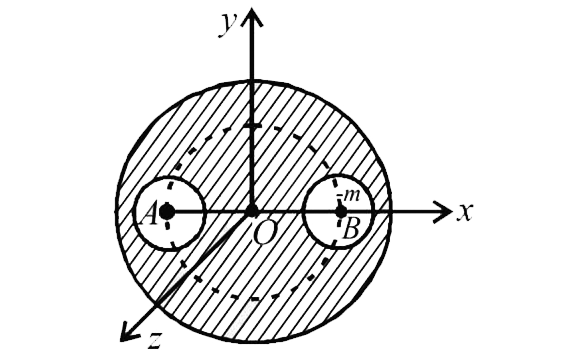 View Solution
View SolutionQuestion 187
There are three identical point mass bodies each of mass m locted at the vertices of an equilateral triangle with side r. They are experting gravitational force of attraction on each other, which can be given by Newton's law of gravitaiton. Each mass body produces its gravitational field in the surrounding region. the magnitude of gravitational field at a point due to a point mass body is the measure of gravitaitonal intensity at that point. The gravitational potential at a point in a gravitational field is the amount of workdone in bringing a unit mass body infinity to the given point without acceleration.
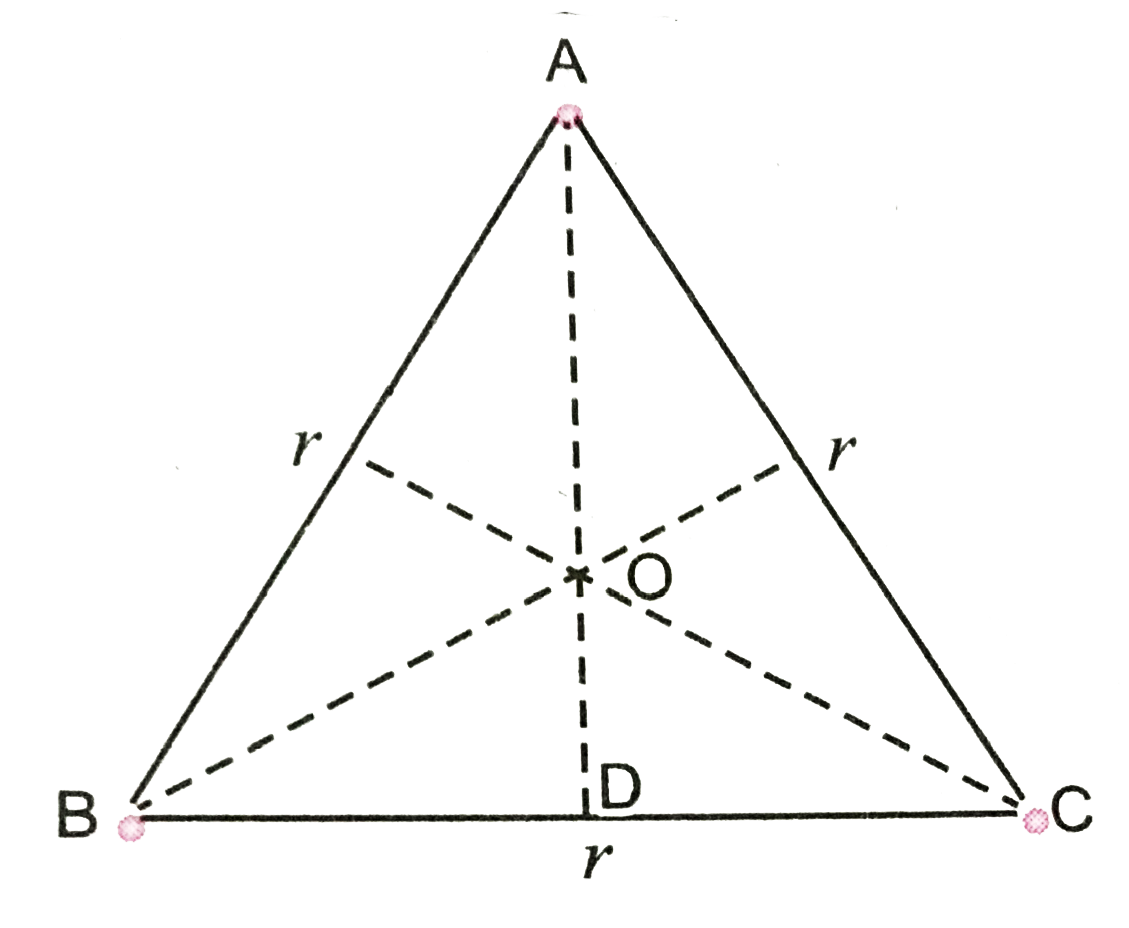
Answer the following questions :
The magnitude of the gravitational force on one body due to other two bodies isView SolutionQuestion 188
There are three identical point mass bodies each of mass m locted at the vertices of an equilateral triangle with side r. They are experting gravitational force of attraction on each other, which can be given by Newton's law of gravitaiton. Each mass body produces its gravitational field in the surrounding region. the magnitude of gravitational field at a point due to a point mass body is the measure of gravitaitonal intensity at that point. The gravitational potential at a point in a gravitational field is the amount of workdone in bringing a unit mass body infinity to the given point without acceleration.
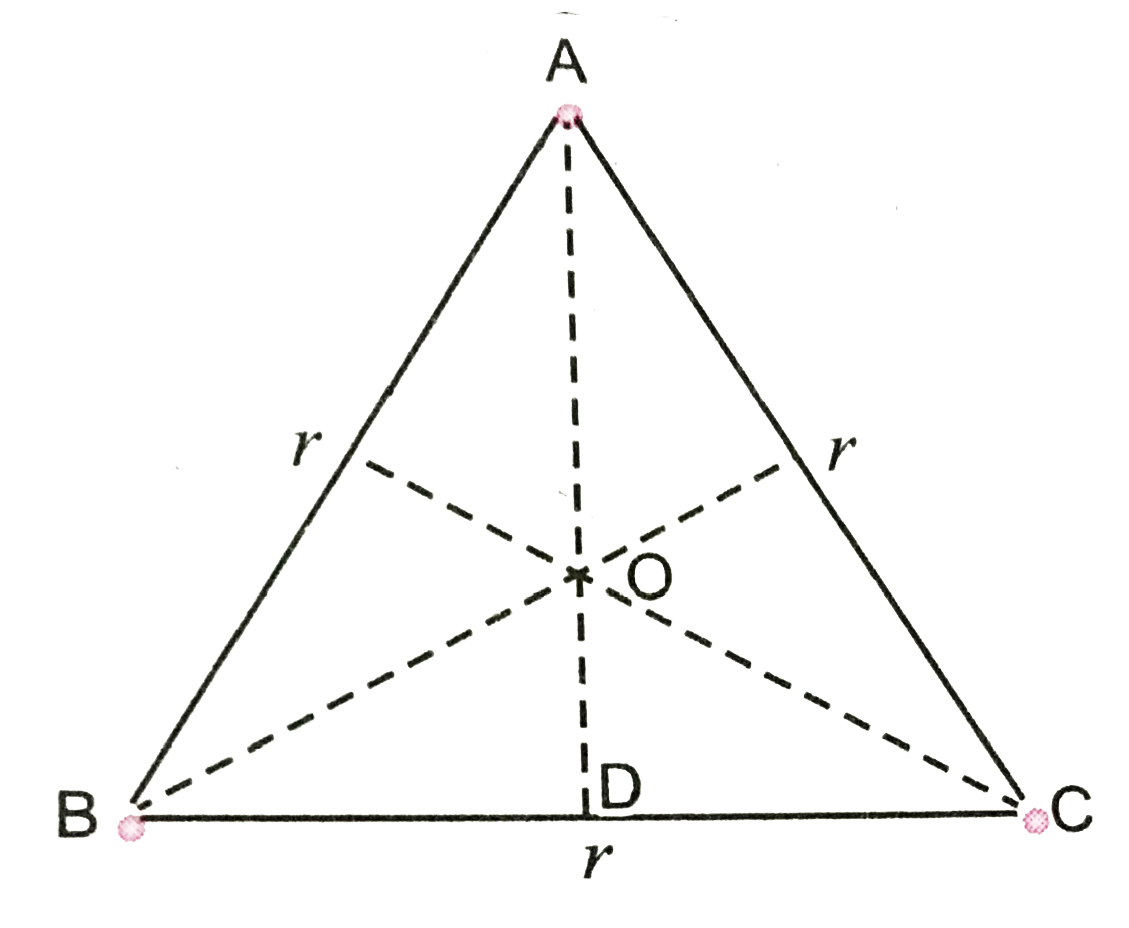
Answer the following questions :
At what speed must they move if they all revolve under the influence of one another's gravitation in a circular orbit circumsribing the triangle still preserving the equilateral triangleView SolutionQuestion 189
There are three identical point mass bodies each of mass m locted at the vertices of an equilateral triangle with side r. They are experting gravitational force of attraction on each other, which can be given by Newton's law of gravitaiton. Each mass body produces its gravitational field in the surrounding region. the magnitude of gravitational field at a point due to a point mass body is the measure of gravitaitonal intensity at that point. The gravitational potential at a point in a gravitational field is the amount of workdone in bringing a unit mass body infinity to the given point without acceleration.

Answer the following questions :
Work done in taking one body far away from the other two bodies isView SolutionQuestion 190
There are three identical point mass bodies each of mass m locted at the vertices of an equilateral triangle with side r. They are experting gravitational force of attraction on each other, which can be given by Newton's law of gravitaiton. Each mass body produces its gravitational field in the surrounding region. the magnitude of gravitational field at a point due to a point mass body is the measure of gravitaitonal intensity at that point. The gravitational potential at a point in a gravitational field is the amount of workdone in bringing a unit mass body infinity to the given point without acceleration.
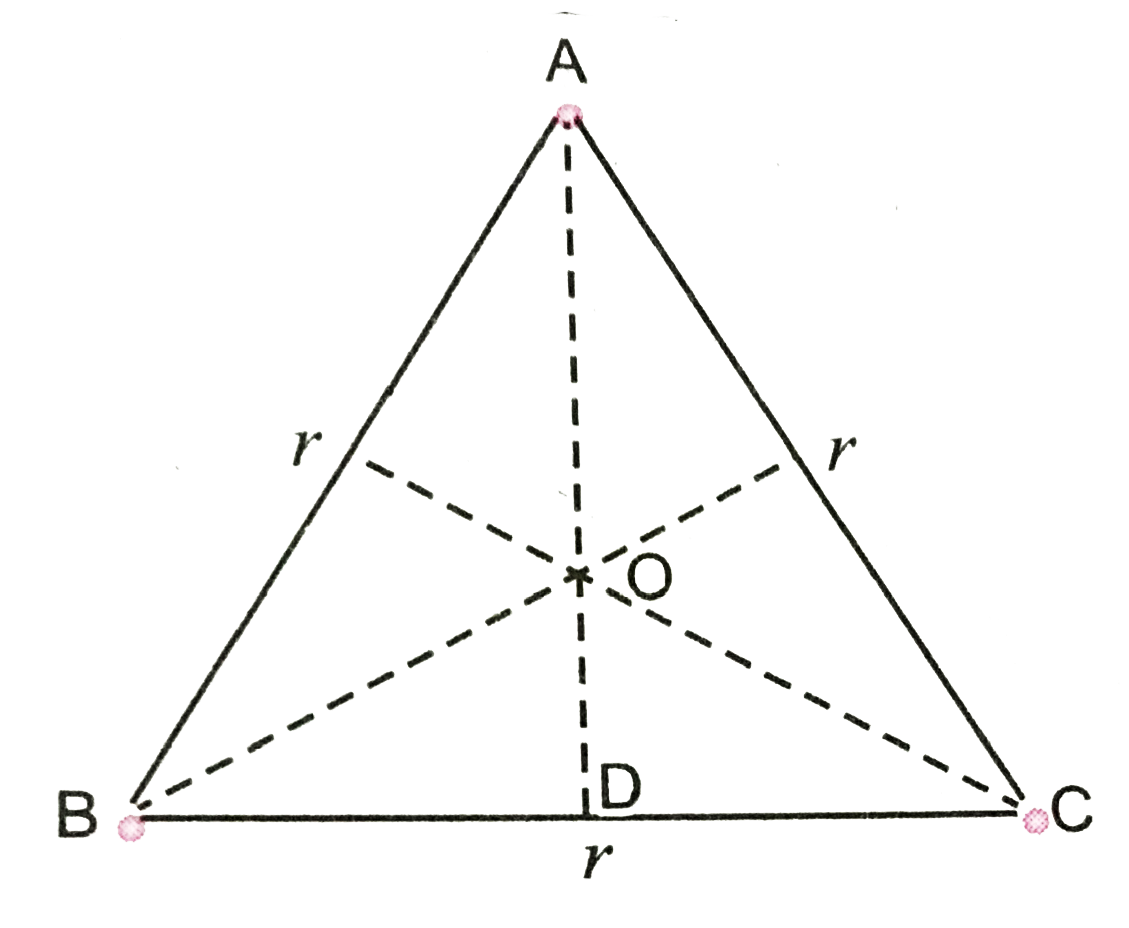
Answer the following questions :
Magnitude of gravitational field at the mid point D of arm BC of triangle ABC isView SolutionQuestion 191
A rocket is fired vertically upwards with a speed of υ(=5kms−1) from the surface of earth. It goes up to a height h before returning to earth. At height h a body is thrown from the rocket with speed υ0 in such away so that the body becomes a satellite of earth. Let the mass of the earth, M=6×1024kg, mean radius of the earth, R=6.4×106m,G=6.67×10−11Nm2kg−2,g=9.8ms−2.
Answer the following questions:
The value of h is View SolutionQuestion 192
A rocket is fired vertically upwards with a speed of υ(=5kms−1) from the surface of earth. It goes up to a height h before returning to earth. At height h a body is thrown from the rocket with speed υ0 in such away so that the body becomes a satellite of earth. Let the mass of the earth, M=6×1024kg, mean radius of the earth, R=6.4×106m,G=6.67×10−11Nm2kg−2,g=9.8ms−2.
Answer the following questions:
Time period of revollution of satellite around the earth is View SolutionQuestion 193
A rocket is fired vertically upwards with a speed of υ(=5kms−1) from the surface of earth. It goes up to a height h before returning to earth. At height h a body is thrown from the rocket with speed υ0 in such away so that the body becomes a satellite of earth. Let the mass of the earth, M=6×1024kg, mean radius of the earth, R=6.4×106m,G=6.67×10−11Nm2kg−2,g=9.8ms−2.
Answer the following questions:
The energy to be spent in taking the satellite out of the gravitational field of the earth is (mass of the satellite is 200kg)View SolutionQuestion 194
A rocket is fired vertically upwards with a speed of υ(=5kms−1) from the surface of earth. It goes up to a height h before returning to earth. At height h a body is thrown from the rocket with speed υ0 in such away so that the body becomes a satellite of earth. Let the mass of the earth, M=6×1024kg, mean radius of the earth, R=6.4×106m,G=6.67×10−11Nm2kg−2,g=9.8ms−2.
Answer the following questions:
If this satellite is to be taken at double of the present height from the surface of the earth, then the new time period of revolution is View SolutionQuestion 195
Graviational acceleration on the surface of plane fo √611g. where g is the gracitational acceleration on the surface of the earth. The average mass density of the planet is 23 times that of the earth. If the escape speed on the surface of the earht is taken to be 11kms−1 the escape speed on teh surface of the planet in kms−1 will beView SolutionQuestion 199
Two saetllites S1 and S2 revolve around a planet in coplaner circular orbit in the same sense. Their periods of revolutions are 1 hour and 8 hours respectively. The radius of orbit of S1 is 104km. When S2 is closed to S1, the speed of S2 relative to S1 is π×10nkm/h. what is the value of n?View SolutionQuestion 215
Statement-1 : An artificial satellie moving in a circular orbit around the earth has a total energy (i.e., sum of potential energy and kinetic energy)
E0. Its potential energy is −E0.
Statement-2 : Potential energy of the body at a point in a gravitaitonal field of earth is −GMmR.View SolutionQuestion 216
Statement-1 : Two soild sphere of radius r and 2r, made of same material, are kept in contact. The mutual grvitational force to attraction between them is proportional to 1/r4.
Statement-2 : Gravitational attraction between two point mass bodies varies inversely as the square of the distance between them.View Solution
All Exercises from PRADEEP PHYSICS (HINGLISH) Class 11 PHYSICS GRAVIATION
- ASSERTION-REASON TYPE QUESTIONS
- FILL IN THE BLANKS
- FOCUS MULTIPLE CHOICE QUESTIONS I.
- INTEGER TYPE QUESTIONS
- MULTIPLE CHOICE QUESTIONS
- MULTIPLE CHOICE QUESTIONS -II
- MULTIPLE CHOICE QUESTIONS II.
- MULTIPLE CHOICE QUESTIONS III.
- MULTIPLE CHOICE QUESTIONS IV.
- MULTIPLE CHOICE QUESTIONS V.
- NCRET MULTIPLE CHOICE QUESTIONS -I
- PROBLEMS FOR PRACTIVE
- PROBLEMS FOR PRACTIVE A
- PROBLEMS FOR PRACTIVE B
- PROBLEMS FOR PRACTIVE C
- PROBLEMS FOR PRACTIVE D
- PROBLEMS FOR PRACTIVE E
- PROBLEMS FOR PRACTIVE F
- PROBLEMS FOR PRACTIVE G
- PROBLEMS FOR PRACTIVE H
- PROBLEMS FOR PRACTIVE I
- PROBLEMS FOR PRACTIVE J
- PROBLEMS FOR PRACTIVE K
- ADDITIONAL EXERCISES
- ADVANCED PROBLEMS FOR COMPETITIONS
- CONCEPTUAL PROBLEMS
- CONCEPTUAL PROBLEMS I.
- CONCEPTUAL PROBLEMS II.
- CONCEPTUAL PROBLEMS III.
- CONCEPTUAL PROBLEMS IV.
- CONCEPTUAL PROBLEMS V.
- CURIOSITY QUESTION
- LONG ANSWER QUESTIONS
- NCERT
- QUESTIONS
- SAMPLE PROBLEM
- SHORT ANSWER QUESTIONS
- SHORT ANSWER QUESTIONS I.
- SHORT ANSWER QUESTIONS II.
- SHORT ANSWER QUESTIONS III.
- SHORT ANSWER QUESTIONS IV.
- SHORT ANSWER QUESTIONS V.
- SOLVED EXAMPLES
- SOLVED EXAMPLES TYPE A
- SOLVED EXAMPLES TYPE B
- SOLVED EXAMPLES TYPE C
- SOLVED EXAMPLES TYPE D
- SOLVED EXAMPLES TYPE E
- SOLVED EXAMPLES TYPE F
- SOLVED EXAMPLES TYPE G
- SOLVED EXAMPLES TYPE H
- SOLVED EXAMPLES TYPE I
- SOLVED EXAMPLES TYPE J
- SOLVED EXAMPLES TYPE K
- VALUE BASED QUESTIONS
- VERY SHORT ANS. QUESTIONS
- VERY SHORT ANS. QUESTIONS I.
- VERY SHORT ANS. QUESTIONS II.
- VERY SHORT ANS. QUESTIONS III.
- VERY SHORT ANS. QUESTIONS IV.
- VERY SHORT ANS. QUESTIONS V.
- VERY SHORT ANSWER QUESTIONS


